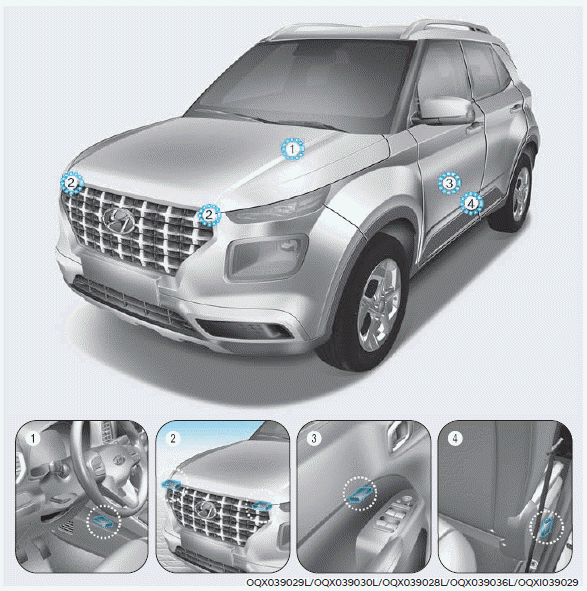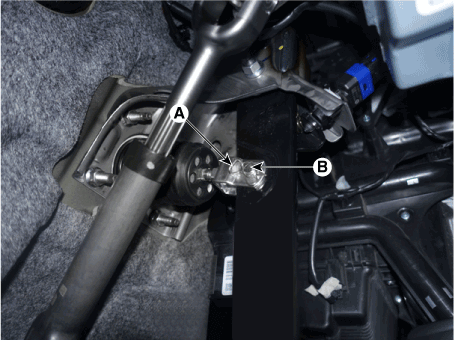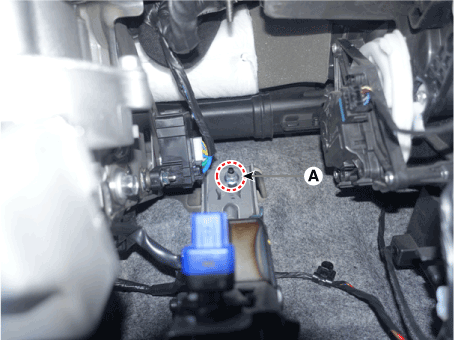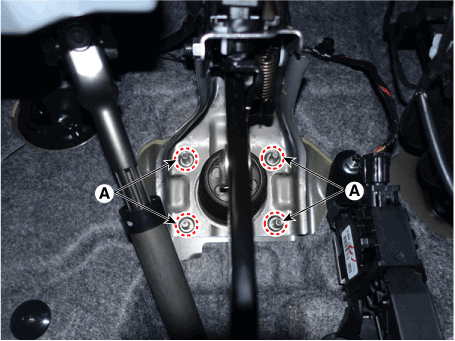Hyundai Venue: Brake Pedal / Repair procedures
| Removal |
| 1. |
Turn the ignition switch OFF and disconnect the battery negative (-)
cable.
|
| 2. |
Remove the crash pad lower panel.
(Refer to Body - "Crash Pad Lower Panel")
|
| 3. |
Disconnect the brake switch connector (A).
|
| 4. |
Disconnect the snap pin (A) and clevis pin (B).
|
| 5. |
Remove the brake pedal assembly after loosening the mounting and nuts
(A).
|
| Inspection |
| 1. |
Check the bushing for wear.
|
| 2. |
Check the brake pedal for bending or twisting.
|
| 3. |
Check the brake pedal return spring for damage.
|
| Installation |
| 1. |
Install in the reverse order of removal.
|
Other information:
Hyundai Venue (QX) (2020-2025) Service Manual: Hood Weatherstrip. Repair procedures
Replacement 1. Remove the hood weatherstrip (A). • Be careful not to scratch the hood weatherstrip...
Hyundai Venue (QX) (2020-2025) Service Manual: Repair procedures
Removal 1. Turn ignition switch OFF and disconnect the battery negative (-) terminal. 2. Remove the drive belt. (Refer to Engine Mechanical System - "Drive Belt") 3...
Categories
- Manuals Home
- 1st Generation Venue Owners Manual
- 1st Generation Venue Service Manual
- Vehicle Identification Number (vin), Vehicle Certification Label
- Operating Door Locks from Outside the Vehicle
- Trip Computer
- New on site
- Most important about car
Air bag collision sensors
WARNING
To reduce the risk of an air bag deploying unexpectedly and causing serious injury or death:
Do not hit or allow any objects to impact the locations where air bags or sensors are installed. Do not perform maintenance on or around the air bag sensors. If the location or angle of the sensors is altered, the air bags may deploy when they should not or may not deploy when they should. Do not install bumper guards or replace the bumper with a nongenuine HYUNDAI parts. This may adversely affect the collision and air bag deployment performance. Place the ignition switch in the LOCK/OFF or ACC position when the vehicle is being towed to prevent inadvertent air bag deployment. Have all air bag repairs conducted by an authorized HYUNDAI dealer.
Copyright © 2025 www.hvenueqx.com






